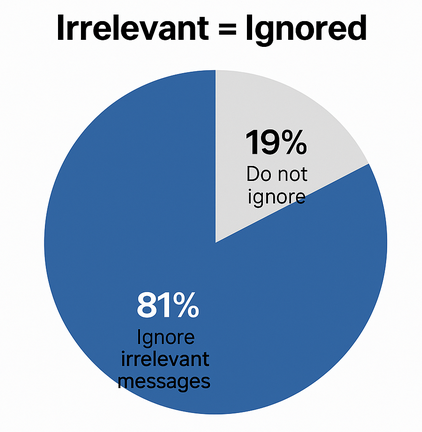Behavioral data refers to the information collected from users’ online activities—what pages they visit, how long they stay, what they click on, and what actions they take next. This data gives advertisers a deeper insight into audience interests and buying intent.
Unlike demographic targeting, which relies on static attributes like age or gender, behavioral targeting uses dynamic signals that reflect real-time engagement. This helps marketers deliver messages that match users’ current mindset and stage in the buying journey.
Why Behavioral Data Matters for Ad Performance
Using behavioral data can significantly improve the effectiveness of your ad campaigns. According to a study by eMarketer, campaigns that leverage behavioral targeting achieve up to 73% higher click-through rates compared to non-targeted ads. Additionally, 60% of consumers say they are more likely to purchase from brands that tailor experiences to their interests.

Consumers are 4 out of 5 times more likely to buy when a brand personalises their experience
By integrating behavioral data into campaign strategies, advertisers can:
-
Reduce wasted ad spend by excluding uninterested audiences.
-
Improve relevance through context-aware ad delivery.
-
Increase conversion rates with personalized messaging.
Practical Ways to Use Behavioral Data

More than eight in ten consumers filter out marketing that feels irrelevant
-
Retargeting Based on User Actions
Re-engage visitors who viewed a product or service but didn’t convert. Behavioral retargeting often delivers conversion rate improvements of up to 150% compared to standard remarketing. -
Dynamic Creative Optimization (DCO)
Automatically tailor ad visuals and messages based on user behavior and preferences. This ensures every viewer sees the most relevant content. -
Behavioral Segmentation
Group audiences by their browsing habits, purchase intent, or engagement patterns. For instance, segmenting users who repeatedly check pricing pages may indicate strong buying intent. -
Predictive Targeting
Use machine learning models to anticipate future actions based on past behaviors, allowing proactive campaign adjustments before engagement drops.
Measuring the Impact
To understand the impact of behavioral targeting, marketers should monitor key performance metrics such as:
-
Click-through rate (CTR)
-
Conversion rate (CVR)
-
Return on ad spend (ROAS)
-
Customer lifetime value (CLV)
These metrics reveal whether behavioral insights are effectively translating into business outcomes.
Final Thoughts
Behavioral data turns advertising from guesswork into precision. By focusing on user intent and engagement patterns, brands can achieve greater efficiency and stronger emotional resonance with their audiences. The key lies in continuously collecting, analyzing, and acting on behavioral insights.
Suggested Articles:

